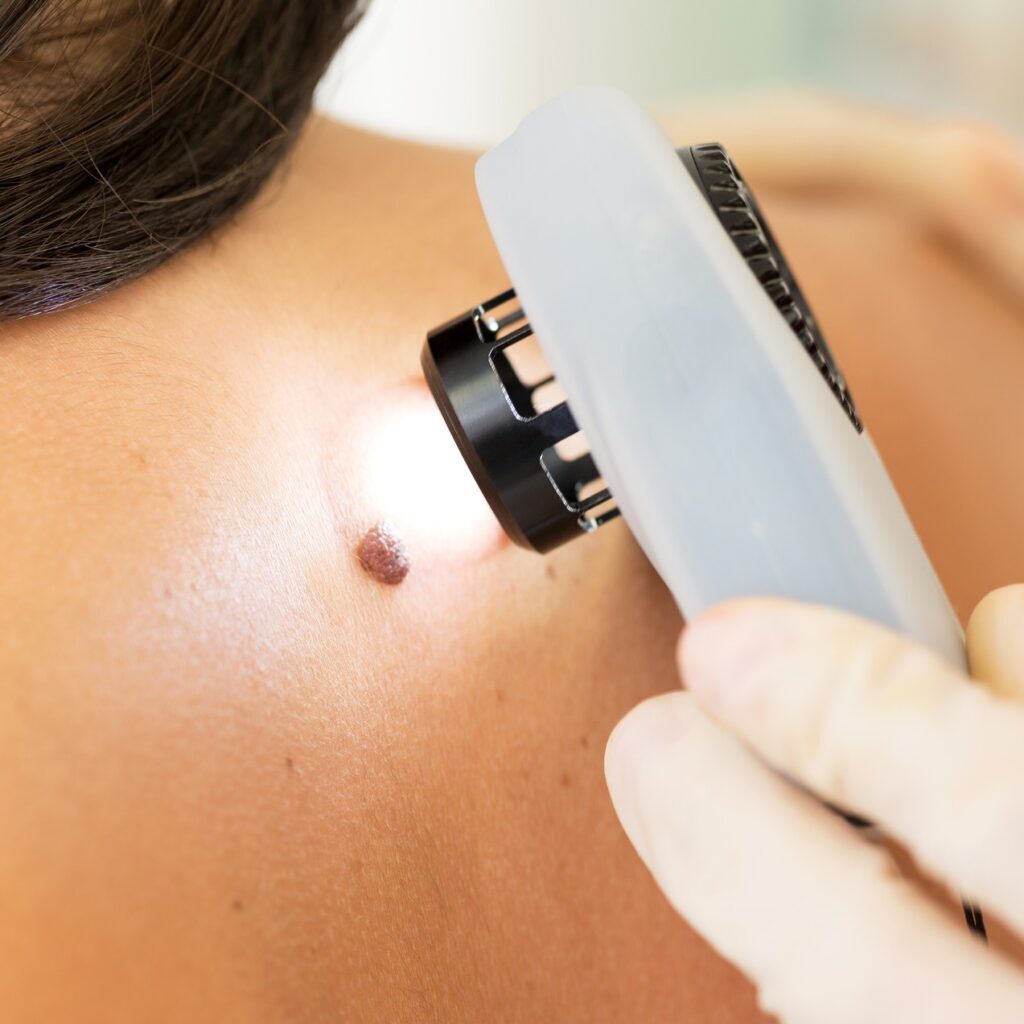How to Prepare for a Skin Cancer Screening

Skin cancer is the most common type of cancer, accounting for more than half of all cancer cases in the United States. More than 3.5 million skin cancers in over two million people are diagnosed annually.
A skin cancer screening can be an important way to check for signs of skin cancer. Skin cancer is the most common type of cancer in the United States, and it is important to catch it early. Read on to learn how to prepare for a skin cancer screening and more about skin cancer signs to watch out for.
How to Prep for Your Skin Cancer Screening
Preparing for a skin cancer screening can help make the process go smoothly. By being prepared and knowing what to expect, you can help ensure that any potential problems are caught early.
Here’s what you need to know to prepare for a skin cancer screening:
- Talk to your doctor. Discuss your risk factors for skin cancer and whether a screening is appropriate for you.
- Know your family history. If anyone in your family has had skin cancer, you may be at higher risk and need to be screened more often.
- Check your insurance coverage. Many insurance plans cover at least part of the cost of a skin cancer screening.
- Schedule a convenient time. Make sure to schedule your skin cancer screening at a time that works for you.
- Prepare for the exam. There’s no need to do anything special to prepare for a skin cancer screening, but it’s important to be aware of what will happen during the exam. The doctor will visually examine your skin and may use a tool called a dermatoscope to get a closer look at any suspicious areas.
- Follow up as needed. If the doctor finds anything abnormal, you may need to have a follow-up exam or biopsy. But don’t worry—most skin cancers can be successfully treated if they’re caught early.
By taking these steps, you can help ensure that your skin cancer screening is as effective as possible.
What Are the Different Types of Skin Cancer?
There are three main types of skin cancer: basal cell carcinoma, squamous cell carcinoma, and melanoma.
Basal cell carcinoma is the most common type of skin cancer, accounting for about 80% of all skin cancer cases. It typically appears as a small, raised bump that is flesh-colored, pink, or red. Basal cell carcinomas can also appear as flat, scaly patches. They are most often found on areas of the body that have been exposed to the sun, such as the face, neck, and hands.
Squamous cell carcinoma is the second most common type of skin cancer, accounting for about 20% of all cases. It typically appears as a firm, red bump that may be raised or flat. Squamous cell carcinomas can also appear as scaly patches that may bleed. They are most often found on areas of the body that have been exposed to the sun, such as the face, neck, ears, and hands.
Melanoma is the most dangerous type of skin cancer, accounting for about 4% of all cases. Melanomas can occur anywhere on the body but are usually found on the face, chest, or back. They typically appear as a new mole or a change in an existing mole. Melanomas may be black, brown, or any color.
Skin cancer can be prevented by avoiding UV exposure, using sunscreen, and getting regular skin cancer screenings. If caught early, skin cancer is highly treatable.
If you have any concerns about a suspicious spot on your skin, you should see a doctor for a professional opinion.
How Often Should You Have a Skin Cancer Screening?
Most people should have a skin cancer screening at least once a year. If you have risk factors for skin cancer, you may need to have more frequent screenings.
What Are the Risk Factors for Skin Cancer?
There are several risk factors for skin cancer, including exposure to ultraviolet (UV) radiation from the sun or other sources, such as tanning beds. People with lighter skin are at greater risk of developing skin cancer, but the disease can affect people of all races and ethnicities. People who have had skin cancer before are also at greater risk of developing the disease again. Other risk factors include a family history of skin cancer, certain types of moles, and weakened immune systems.
What Signs Should You Look for that You Need a Skin Cancer Screening?
There are some signs that may indicate you need a skin cancer screening. These include changes in the size, shape, or color of a mole, as well as new moles appearing. If you notice any of these changes, make an appointment with your doctor to be checked out.
If you’re looking for a top-notch skin cancer screening in Utah, look no further than Swinyer Woseth Dermatology. We offer the latest technology and treatments to ensure that you’re getting the best possible care. Contact us today to schedule an appointment. We look forward to meeting you!
